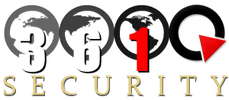Country Profile: Somolia
|
Executive Summary
Somalia is plagued with a hellish climate, causing turbulence among a populace that relies heavily on subsistence living. Recently, the worse drought in 60 years resulted in a catastrophic famine. This only compounded the social strife that arose when the state lost any sort of formal government structure in the early 1990s. Clans in the northern portion of Somalia united to form Somaliland and declared independence from Somalia; concurrently, the region just east of Somaliland formed the semi autonomous state of Somaliland. Characterized by terror groups such as alShabaab and rogue pirates in the Gulf of Aden and the Indian Ocean, Somalia was significantly impeded in its attempts to organize the political chaos and secure diplomatic relations with foreign states. Brief History
Formally a European colony that changed hands between France, Britain, and Italy, Somalia gained its independence in 1960. Nine years later, a coup headed by Mohamed Siad Barre brought about an authoritarian socialist rule. By 1991, this regime collapsed when another rebel group, the United Somali Congress (USC), gained control of the capital city, Mogadishu. A fullblown civil war developed in the capital when the USC fragmented into rival, clan based factions, which brought about an extended period of political and social chaos. A series of interim governments were ultimately established by the early 2000s, leading to today’s parliamentary government. Political Structure
Economic Structure
Social Structure
Religion:
Children under the age of 5 years underweight: 32.8% (2006) |
|
Operating Organizations
Political Groups: Numerous clan and subclan factions exist both in support and in opposition to the transitional government.
Terrorist: alShaabab
Political Groups: Numerous clan and subclan factions exist both in support and in opposition to the transitional government.
Terrorist: alShaabab
Allies and Enemies
Regional Allies: Ethiopia
Regional Enemies: N/A
Global Allies: U.N. sponsored government is allied with the international community
Global Enemies: United States (note: the U.S. engages with militant groups such as alShaabab and Somali pirates, not the Somali government)
Regional Allies: Ethiopia
Regional Enemies: N/A
Global Allies: U.N. sponsored government is allied with the international community
Global Enemies: United States (note: the U.S. engages with militant groups such as alShaabab and Somali pirates, not the Somali government)
Country Trajectory
After more than two decades of disarray, the political climate of Somalia is finally stabilizing. It appears that the state is emerging as an entity that can implement effective strategies to improve living conditions and perhaps bring further peace to the wartorn region. Although alShabaab has largely been eliminated as a threat, pirate activity by Somali nationals is proving to be difficult to wholly eradicate. Additionally, the state is faced with a massive hunger crisis, the severity of which largely depends on the variables of weather and conflict. While droughts are not something the state can control, alShabaab had denied the existance of the famine and refused aid from Western organizations. The solidification of the new government in Mogadishu brings hope that new diplomatic relations will help to aid domestic crises such as hunger.
After more than two decades of disarray, the political climate of Somalia is finally stabilizing. It appears that the state is emerging as an entity that can implement effective strategies to improve living conditions and perhaps bring further peace to the wartorn region. Although alShabaab has largely been eliminated as a threat, pirate activity by Somali nationals is proving to be difficult to wholly eradicate. Additionally, the state is faced with a massive hunger crisis, the severity of which largely depends on the variables of weather and conflict. While droughts are not something the state can control, alShabaab had denied the existance of the famine and refused aid from Western organizations. The solidification of the new government in Mogadishu brings hope that new diplomatic relations will help to aid domestic crises such as hunger.
Current Events
http://www.aljazeera.com/news/africa/2013/01/201311715639188977.html
http://allafrica.com/stories/201301250735.html
- Jan. 17th, 2013: Former U.S. Secretary of State Hillary Clinton recognized the government of Somalia in Mogadishu after more than 20 years of a diplomatic hiatus.
http://www.aljazeera.com/news/africa/2013/01/201311715639188977.html
- Jan. 24th, 2013: The president of Somalia, Hassan Sheikh Mohamud, stated his satisfaction and hopefulness with being recognized diplomatically by the United States. He claimed his administration will strive toward fighting “three evils” that have the ability to prevent further progress in the state: murder, rape, and corruption.
http://allafrica.com/stories/201301250735.html
Sources
- http://www.fco.gov.uk/en/travelandlivingabroad/traveladvicebycountry/countryprofile/subsaharanafrica/somalia?profile=politics
- https://www.cia.gov/library/publications/theworldfactbook/geos/so.html
- http://web.archive.org/web/20071014020009/http://www.religiousintelligence.co.uk/country/?CountryID=157
- http://www.bbc.co.uk/news/worldafrica14094503
- http://www.aljazeera.com/news/africa/2013/01/201311715639188977.html
- http://allafrica.com/stories/201301250735.html
- http://www.guardian.co.uk/globaldevelopment/2013/jan/23/crisiscongodrchungerconflict
